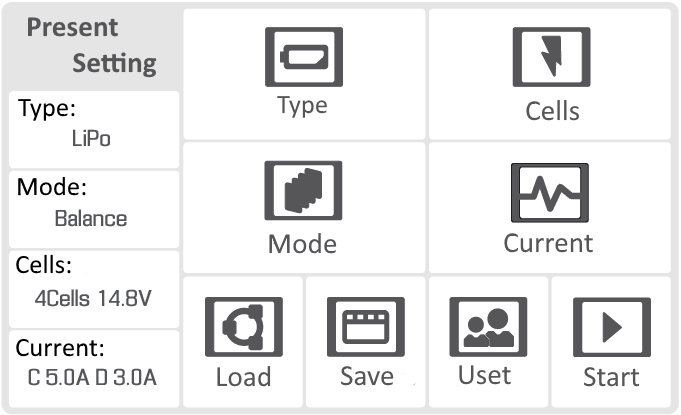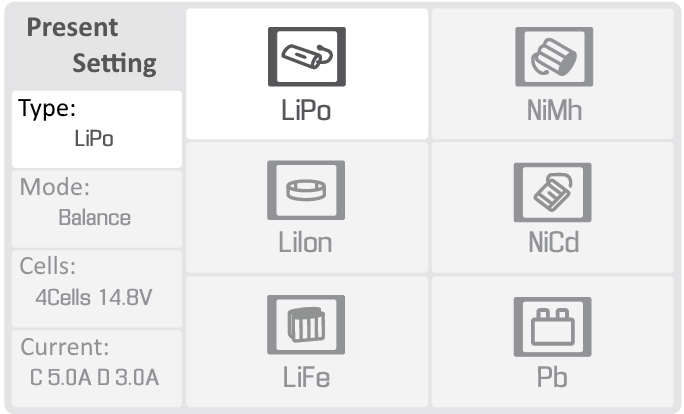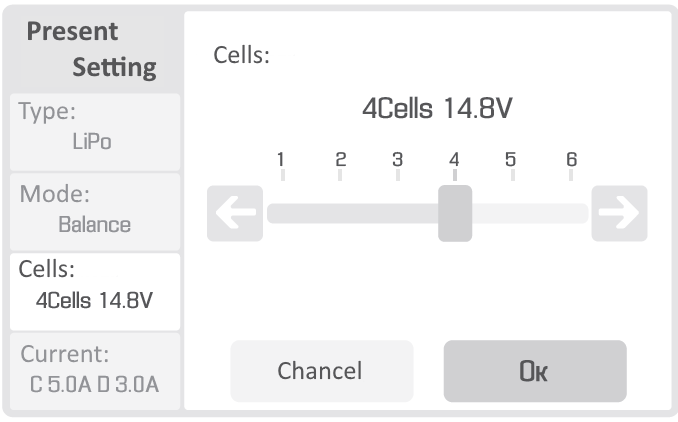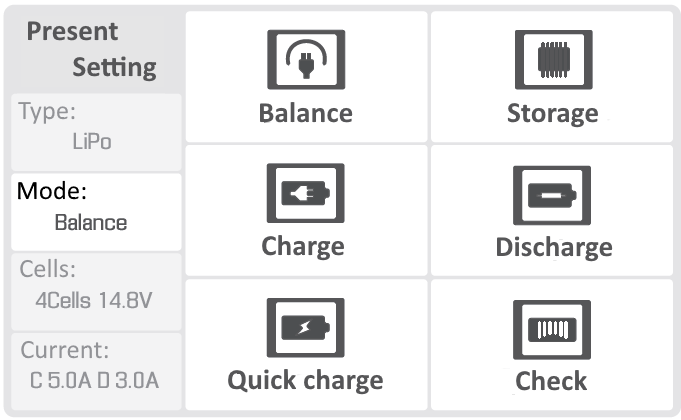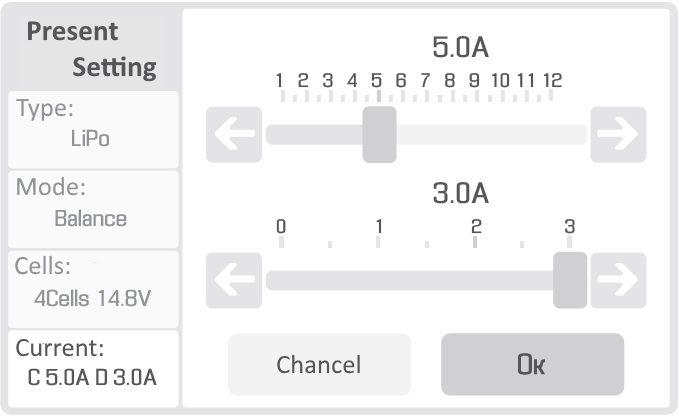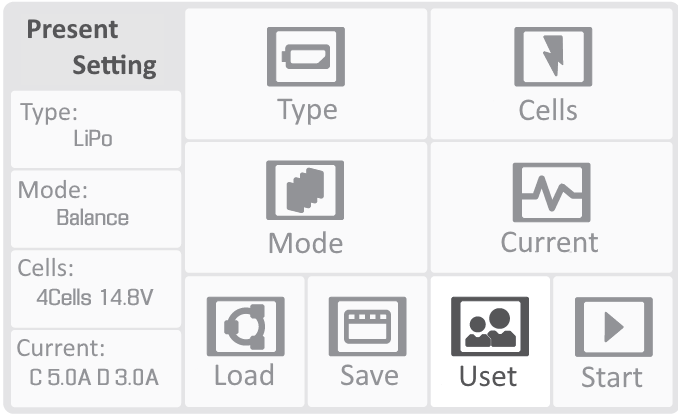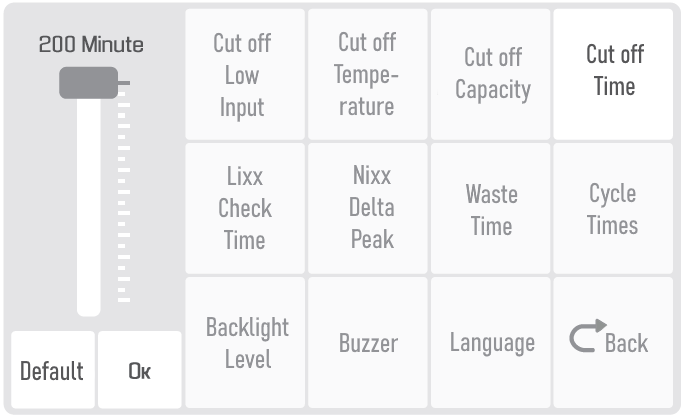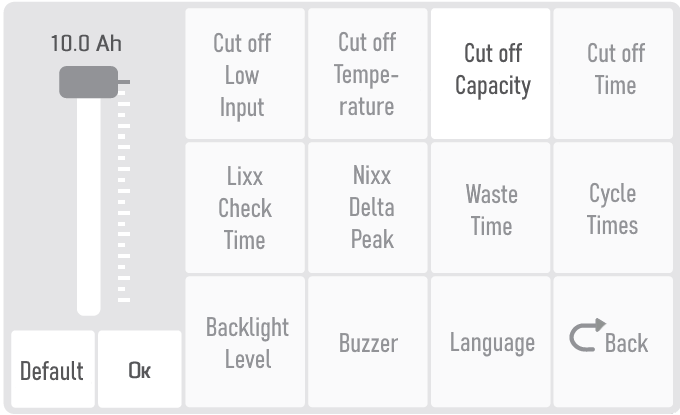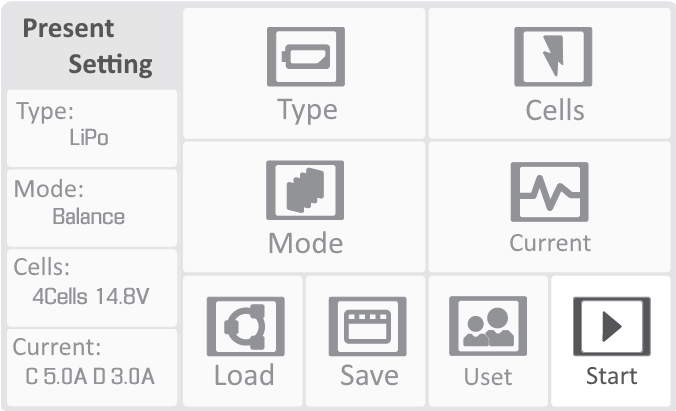Charger and battery¶
Guaranteed number of charge-discharge cycles |
50 |
Upper charge limit |
16.8 V |
Lower discharge limit |
13.2 V |
Charging current |
<10 А |
Number of cells |
4 |
Capacity |
10 000 mAh |
Safety requirements¶
Battery
Don’t disassemble or deform the battery (don’t drop and pierce).
Don’t allow heat the battery more than 60 degrees.
Don’t overcharge the battery (over 42V).
Don’t allow the battery discharge below 30V.
Don’t store battery fully discharged. For long-term battery storage (a month or more) it must be transferred to the Storage mode by the battery charger.
Don’t charge battery by currents more than charge limit (no more than 100% of the capacity. We recommended to charge 50% of the capacity to extend the battery’s life cycle). Current more than the limit will heat the battery over than 60 °C.
Attention
Failure to follow the above instructions may result in fire or battery failure.
Charger
The charger must be switched on before connect the battery with the charger.
Cables and connectors must be inspected for damage before each use.
Don’t operate the charger in direct sunlight.
Don’t leave the charger without supervision.
The charger is configured from the factory. Follow the instructions to config preset, if the settings are different.
Preset of the battery charger¶
You will see main menu, when you turn on the charger. You can set parameters by using the touch screen.
Set battery charge parameters:
In Type section select LiPo:
In Cells section select 4Cells 14.8V:
In Mode section select:
Balance only for the battery charge.
Storage to transfer the battery to storage mode.
Charge to charge the battery without balancing the voltage on the elements (not recommended to charge in this mode).
Discharge for battery discharge.
Quick Charge for charging with high currents (not recommended to charge in this mode).
Checker to check battery status.
In Current section set Charge: 5.0А, Discharge: 3.0А:
Select Uset section:
In Uset section set Cutoff Time 200 Minute:
In Uset section set Cutoff Capacity 10.0 Ah:
Battery charging¶
Plug the AC power cable into the charger.
Plug the cable into a outlet.
Connect the balancing cable to the battery.
Connect the power cable connector to the battery.
Check the charger settings and start the charge process by long (3 seconds) clicking on icon Start.
Disconnect the battery after charging in reverse order.
Lithium polymer (LiPo) battery recommendations on the use¶
The following rules must be observed to prevent dangerous situations:
The battery must be stored in a warm place before launch for a flights in a temperature lower than 0 °C. LiPo batteries can lose up to 30% of a capacity in cold. You need to pay attention to this, when you’re planning a flight task.
The battery must be stored in a cool place before launch for a flights in temperature above 25 °C protected from direct sunlight. Don’t charge the battery immediately before flight. It should cool down. Charge the battery only in a cool and protected from direct sunlight place.
Battery check¶
We recommended to carry out a full charge/discharge cycle for a check battery status.
Charge the battery.
Discharge the battery to 13.5 V by select Discharge mode.
Recharge the battery.
Storage and discharge¶
Put the battery in a storage mode, if you don’t plan to use it for more than 14 days.
You need to change Balance to Storage mode to do that. Check the correct number of cells on the screen (4 Cells) and start it by a long press Start button.
Batteries should be stored in a cool and dry place, without direct sunlight, at a temperature of 5 to 25 °C and a relative humidity of 80% without condensation.
The optimum temperature is from 5 to 10 °C.
The optimum voltage level for storage mode: 15.12 V.
Battery life cycle - 1 year.
Battery recycling¶
Attention
Don’t throw LiPo batteries with household trash. It may be dangerous for ecology. Send them to recycling points.
